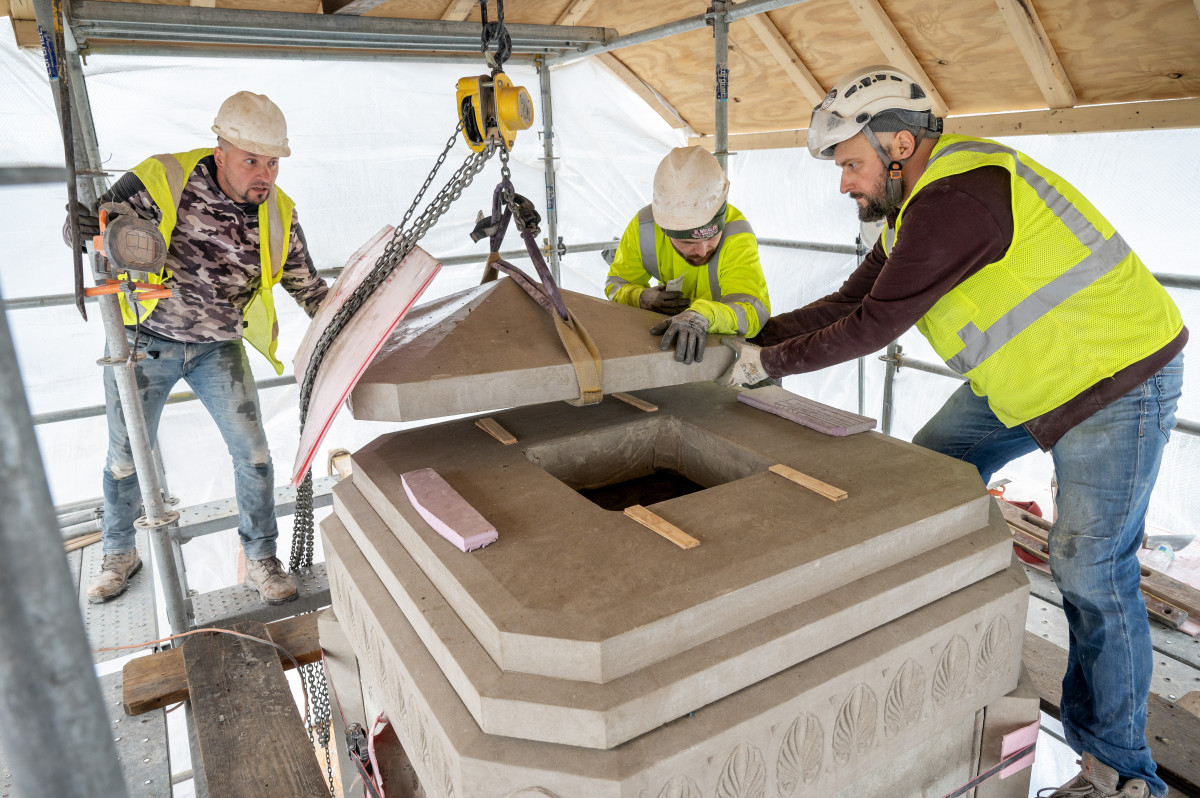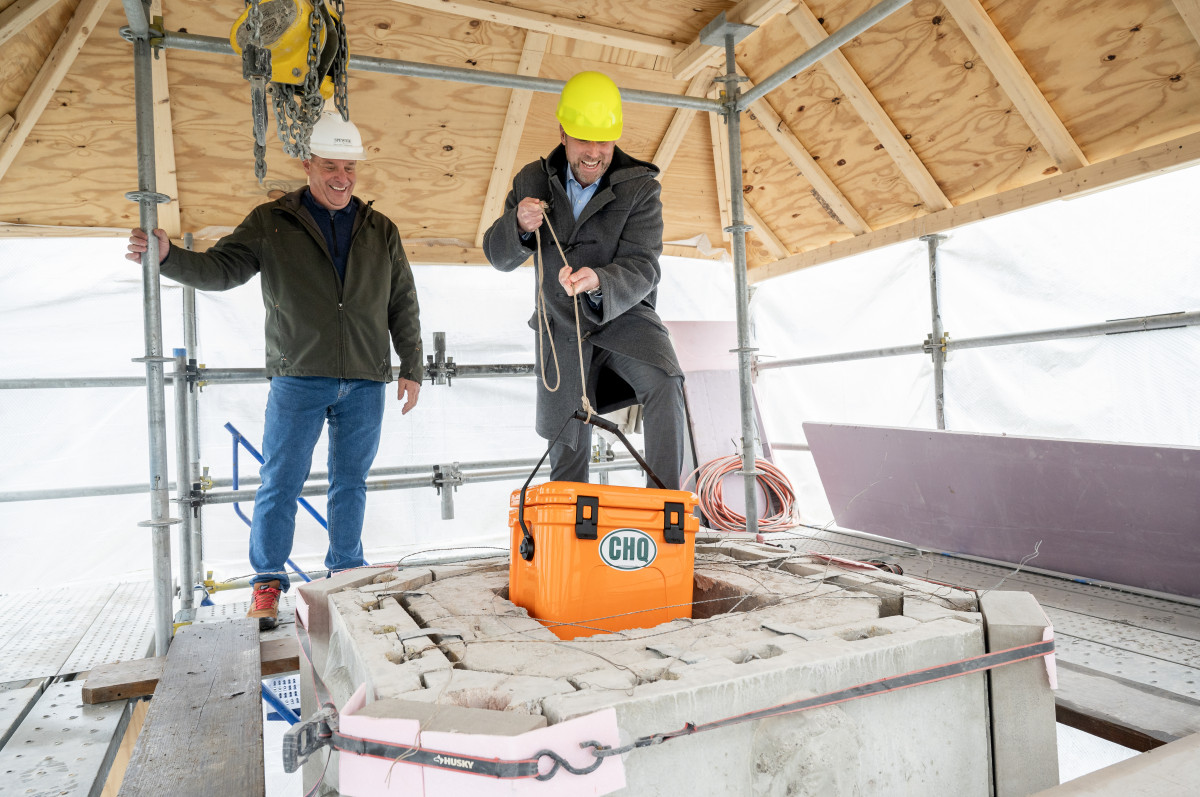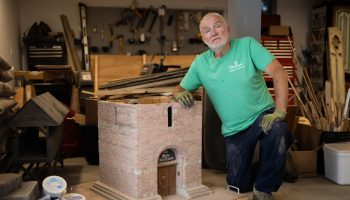For 77 years, the Bestor Plaza fountain has stood at the heart of Chautauqua Institution. Those seven decades spent exposed to the elements slowly took their toll.
In preparation for Chautauqua’s sesquicentennial, work began to restore the fountain and reverse the damage done by water infiltration and freeze-thaw cycles. The project, which was undertaken by Speweik Preservation Consultants, began this February and was completed in May. The original blueprints used to construct the fountain — donated by Chautauqua Institution President Ralph Norton as a tribute to his predecessor, Arthur Bestor — in 1946-47 were used as reference during the restoration, which aimed to maintain the original design by sculptor Fred M. Torrey of the Lorado Taft Midway Studios in Chicago.
With principal support for the restoration project from Chautauquans Willow and Gary Brost, the fountain’s deteriorated precast concrete ziggurat top and fluted sides were replaced with custom carved blocks of Indiana limestone. Three limestone blocks, each weighing over two tons, were winched into position at the top of the fountain by a team led by master stonemason Pawel Nawrocki. Nawrocki, who specializes in the renovation of historic architecture, also oversaw the repair and cleaning of the bas-relief sculptures on the fountain’s sides, and the fish and dove sculptures at each of its four corners. Weather-damaged mortar and sealant were also removed and replaced. Throughout the restoration, the fountain was enclosed in a temporary structure designed to protect it from the elements and provide the heat needed for concrete repairs to take place.
The removal of the fountain’s top revealed a hollow cavity at the center of the structure, which presented an opportunity for a relic box to be placed inside. The day before the three limestone blocks were winched into place at the fountain’s top, Chautauqua Institution president Michael E. Hill, joined by Vice President of Campus Planning and Operations John Shedd, used a rope to slowly lower the box into the fountain. The box contained objects representing the present and past, nestled at the heart of Chautauqua as the Institution looks to its future.









